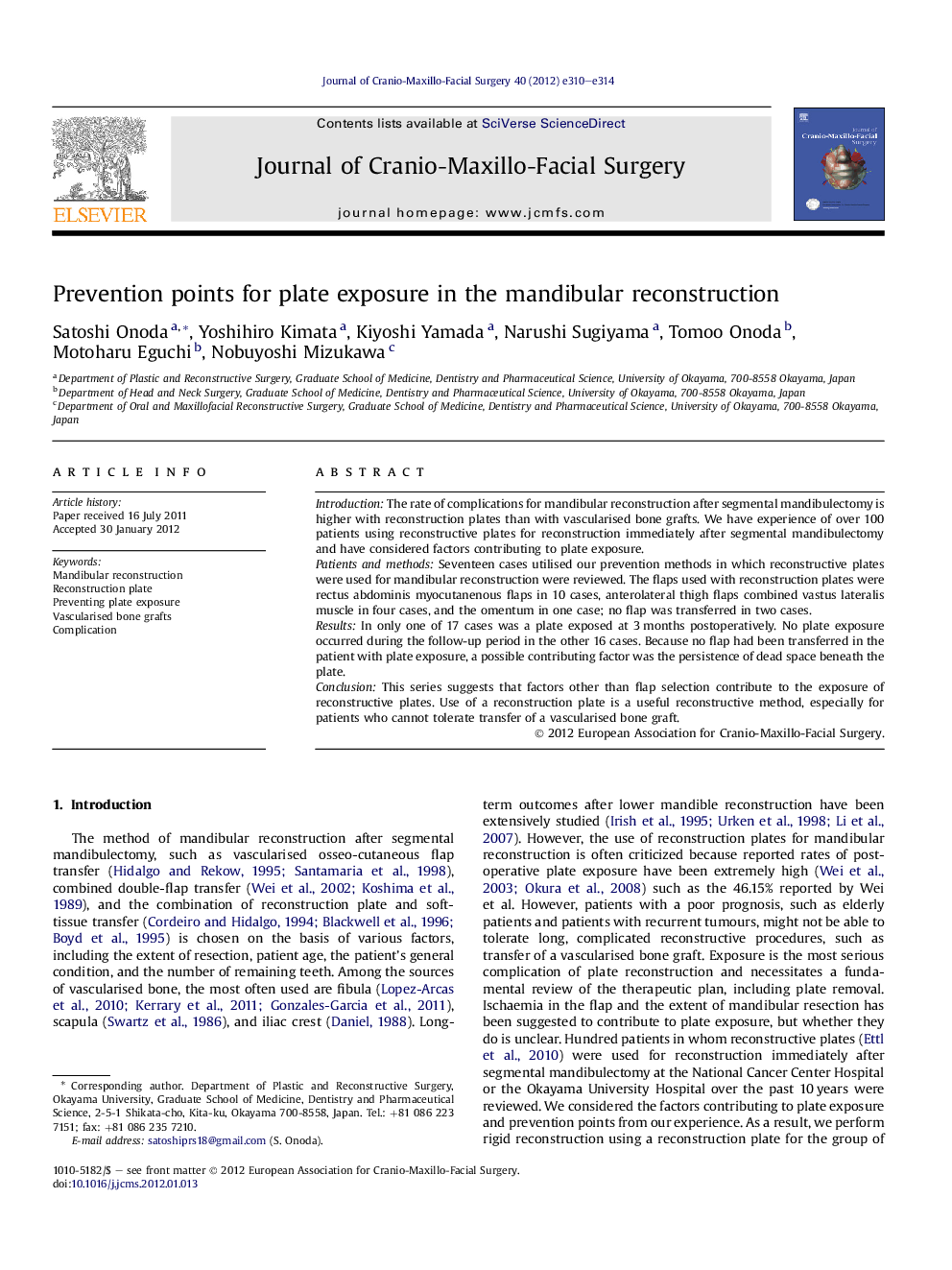| Article ID | Journal | Published Year | Pages | File Type |
|---|---|---|---|---|
| 3143407 | Journal of Cranio-Maxillofacial Surgery | 2012 | 5 Pages |
IntroductionThe rate of complications for mandibular reconstruction after segmental mandibulectomy is higher with reconstruction plates than with vascularised bone grafts. We have experience of over 100 patients using reconstructive plates for reconstruction immediately after segmental mandibulectomy and have considered factors contributing to plate exposure.Patients and methodsSeventeen cases utilised our prevention methods in which reconstructive plates were used for mandibular reconstruction were reviewed. The flaps used with reconstruction plates were rectus abdominis myocutanenous flaps in 10 cases, anterolateral thigh flaps combined vastus lateralis muscle in four cases, and the omentum in one case; no flap was transferred in two cases.ResultsIn only one of 17 cases was a plate exposed at 3 months postoperatively. No plate exposure occurred during the follow-up period in the other 16 cases. Because no flap had been transferred in the patient with plate exposure, a possible contributing factor was the persistence of dead space beneath the plate.ConclusionThis series suggests that factors other than flap selection contribute to the exposure of reconstructive plates. Use of a reconstruction plate is a useful reconstructive method, especially for patients who cannot tolerate transfer of a vascularised bone graft.
